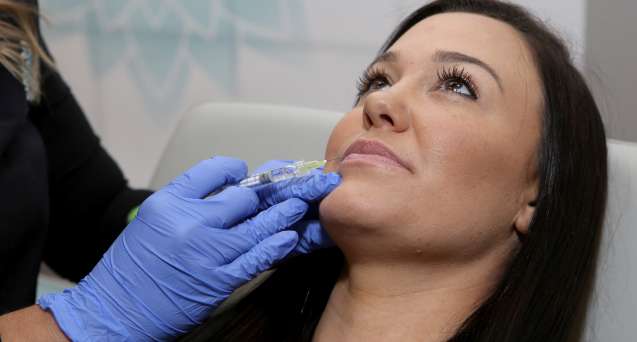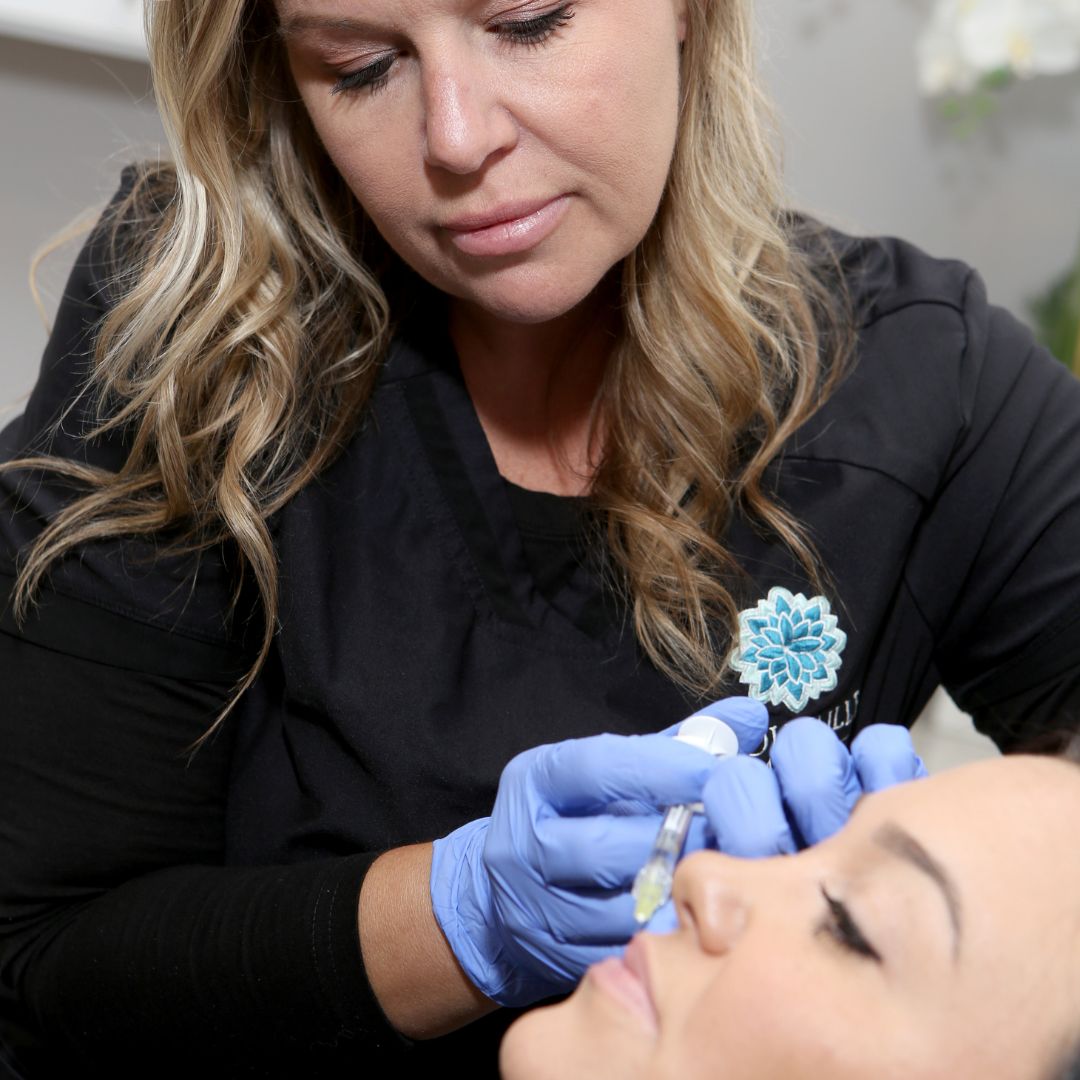Filler Treatments
What are Fillers?
Injectable dermal fillers are great for restoring your youthful appearance. They can plump up lips, enhance facial features and reduce deep lines in the skin with minimal side effects! This treatment option is perfect if you want preventive maintenance therapy. It isn’t just for faces, check out these before and after photos of hands.

What to Expect from Fillers
Your healthcare practitioner will work with you to create a customized treatment plan based on your own unique aesthetic goals and advise you on recommended treatment options and cost.

Benefits of Fillers
Restore Volume in Face
Contour Facial Areas
No Downtime
Natural Results
Diminish Facial Wrinkles & Folds
No Surgery
Non Invasive
Desired Results Within 10-14 Days
Anti Aging
FDA Approved
Before & After Filler Photos




FAQs for Fillers
Fillers are designed to be long lasting—with proven clinical effectiveness and duration up to 15 months.
Filler injections are largely safe when administered by a qualified and experienced healthcare professional. However, like any medical procedure, there are potential risks and side effects to be aware of. These can include: Bruising and Swelling, Allergic Reactions, Infection, Temporary Lumps or Bumps and Migration or Misplacement
Filler can move after injection, influenced by factors like injection technique, filler type, injection site, and individual factors. Skilled injectors minimize this risk, but patients should follow post-injection care to reduce any potential movement.
It’s normally recommended to avoid vigorous exercise and activities that increase blood flow to the face immediately after filler injections. This precaution helps minimize the risk of swelling, bruising, or potential movement of the filler from the injection site. It’s best to follow your healthcare provider’s specific post-injection instructions, which may include avoiding strenuous exercise for a short period after getting fillers.
It’s commonly advised to avoid taking ibuprofen (Advil) or other non-steroidal anti-inflammatory drugs (NSAIDs) immediately after filler injections. These medications can potentially increase the risk of bruising and swelling at the injection site. It’s best to follow your healthcare provider’s guidance regarding pain relief options after filler injections, as they may recommend alternatives that are safer in the immediate post-injection period.
The level of discomfort experienced during lip filler injections can vary from person to person. Some individuals may feel mild discomfort or a pinching sensation during the injection process, while others may find it more uncomfortable. However, many injectors use topical numbing agents or local anesthesia to minimize pain and ensure a more comfortable experience for the patient. If you’re concerned about pain during lip filler injections, you can discuss pain management options with your healthcare provider beforehand.
Swelling after injections typically lasts a few days to a week, depending on the treatment area and individual healing. Using cold compresses and following post-injection care instructions can help reduce swelling.
Facial filler, also known as dermal filler, is an injectable substance used to restore lost volume, smooth lines and wrinkles, and enhance facial contours. They are commonly used in areas such as the cheeks, lips, and around the mouth. Fillers can be made from various materials, including hyaluronic acid. The effects of fillers can last from several months to years, depending on the type of filler used.
The recovery time for getting dermal filler is typically minimal. Most patients can resume their normal activities immediately after the procedure. However, some mild side effects might occur, including:
Swelling: Usually subsides within a few days.
Bruising: Can last up to two weeks.
Redness and Tenderness: Typically resolve within a few hours to a few days.
Itching: Occurs occasionally and usually resolves quickly.
There are several types of dermal fillers, each designed to address specific cosmetic concerns. The most common types include hyaluronic acid fillers, which are used for adding volume and hydration to the skin and are often used in areas like the lips and cheeks. Calcium hydroxylapatite fillers are thicker and used for deeper lines and wrinkles. Poly-L-lactic acid fillers stimulate collagen production and are typically used to treat facial volume loss. Polymethylmethacrylate (PMMA) fillers are semi-permanent and used for deeper wrinkles and folds.
The best type of filler depends on your specific needs and aesthetic goals. Hyaluronic acid fillers, such as Juvederm and Restylane, are quite popular for their versatility and natural-looking results, especially in areas like the lips, cheeks, and nasolabial folds. For deeper wrinkles and more pronounced facial volume loss, calcium hydroxylapatite fillers like Radiesse may be more suitable due to their thicker consistency and longer-lasting effects. Additionally, poly-L-lactic acid fillers, such as Sculptra, are ideal for stimulating collagen production and treating larger areas of volume loss over time. It’s important to consult with your nurse injector to determine the most appropriate filler for your unique facial structure and desired outcome.
The effectiveness of facial fillers versus Botox depends on your cosmetic goals. Fillers add volume and fullness, ideal for cheeks, lips, and deeper wrinkles, with effects lasting several months to over a year. Botox relaxes muscles to smooth fine lines on the forehead, around the eyes, and between the eyebrows, with results lasting three to six months. Consult with your doctor or nurse injector to determine the best treatment plan for you.
The procedure for getting dermal fillers typically takes about 30 minutes to an hour, depending on the areas being treated and the type of filler used. This includes time for consultation, preparation, and the actual injection process. Some patients might require additional time for numbing if needed.
